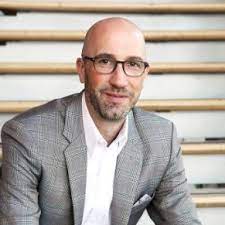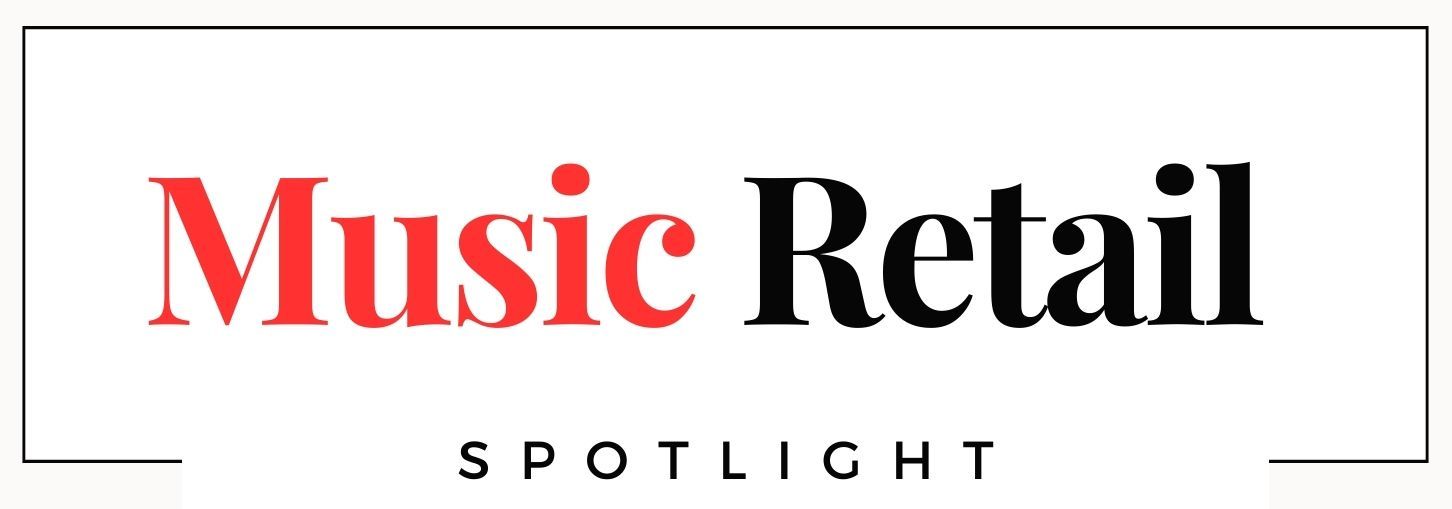SFM's New Chapter Following Its Acquisition by the Midwich Group

“Our business model is to act locally on behalf of the manufacturer in pretty much every aspect past R&D, product development, and manufacturing--everything from establishing and executing the local go-to-market strategy to helping take care of the end user post-sale.”
Since 1978, Montreal-based AV technologies distributor SF Marketing (SFM) has been at the forefront of the Canadian market, representing prestigious brands such as Shure, QSC, Pioneer DJ, Blackmagic Design, and Sony, catering to the retail, systems integration, and live event markets. In addition to its broad portfolio, SFM is known for its unwavering commitment to technical expertise and a people-first company culture—a vital driving force behind its consistent success. SFM's recent acquisition by international AV distribution powerhouse Midwich Group marks a new chapter for the company, unlocking an enriched global perspective and a broader array of value-added services for its customers and partners. In this exclusive interview, SFM president Randal Tucker shares insights on the company's journey, its ability to navigate the distinctive challenges of the Canadian market, and its ongoing journey of growth and innovation.
Let’s start at the beginning.

Can you take me through SFM’s origin story?
SFM was founded in 1978 by Sol Fleising. Sol was the original owner; he started the company as a sales rep agency for a few pro audio brands and some accessories. In the early '80s he became a distributor; it was the classic “running things out of his garage” situation. Over the '80s and '90s he grew the business in that first entrepreneurial phase into a powerhouse in pro audio distribution in Canada.
He was the first person to have professional audio companies that were doing touring and things like that go not through retail channels to buy professional audio equipment, but rather go directly to a distributor who really knew how to sell and support very technical equipment. That was the breakout moment for him, starting a business that dealt directly on a B2B basis with people who lived in the professional audio world. He was a trailblazer in that respect--professional products, sold to professionals by professionals, and supported by professionals.
What are the biggest distribution challenges in Canada?
It comes down to, more than anything, population density over an extremely spread-out space. That's one of the biggest challenges. The other one is doing all of this in two official languages. We're located in Quebec, and a third of the country speaks French as their first language and, in many cases, speak only French as their language of doing business.
With the lack of population density, it's basically the population of California spread over the land mass of the United States, including Alaska. What that means is, for a lot of manufacturers operating out of the US or Europe, they look at a market like ours, and there aren't enough people here for them to come and do business directly, but they want to serve the market in such a way that their products and their technologies are being sold, and most importantly, supported, at the same level as if they were here operating themselves.
It means in Canada there tends to be more of what we call the European boutique distribution model, where you'll have companies like ours that are operating with very technical products, but with exclusive relationships, to basically act on behalf of the manufacturer.
Our business model is to act on behalf of the manufacturer in pretty much every aspect past R&D and manufacturing, everything from the go-to-market to being the complete channel partner all the way to the ultimate end user.
How does that inform your company philosophy?
We always say, "Our purpose is to bring products and services to our customers that instill trust and confidence while continually looking for ways to deliver exceptional experiences." Really what that comes down to is knowing what we sell cold from a technology standpoint and being able to sell it intelligently, selling it into the right applications, and always being there until the very end of when that product stops working someday, because the sale doesn't stop when the box goes out of the warehouse.
The applications that we sell into are fairly mission critical. It's concerts that need to go on, its corporate shareholder events, it's conferencing equipment into the government sector, it’s mass notification systems for airports or military bases. So A, it has to work; B, it has to keep working; and C, at the end of the day, we want to be the end of the line for somebody to call if they're having any problems.
It's been a real sense of ownership over the whole process, and that's what we try to instill in everybody in the company, this idea that our job's never really done.
You’re in many channels: events, integration, retail. What’s your biggest growth area?
The biggest-growing part of our market right now is in audiovisual and control systems. That's everything from government video conferencing and translation systems to things like integrated, connected meeting rooms.
Some of what we sell is direct to the end user, like broadcasters and production companies. Mostly though, we sell through somebody else. But even if we're selling B2B, we have to be very aware of what the B2C relationship is as well. So we're never far from the end user, even if we haven't sold directly to the end user.
How does your organizational structure support these models?
The bread and butter of being a distributor is being able to take an order, have it in stock, and ship it out quickly. That's the table stakes.
We’ve invested heavily in IT functions. For a long time, people in our business had the luxury of not having to digitally transform, and we started realizing about 10 years ago that we ignored digital transformation at our peril. So, we started to invest in technology that would allow us to scale what we do, especially operationally. Most recently for instance, we've deployed technology to run our logistics operations faster, more efficiently, more accurately, and at scale.
Alongside the digital transformation piece is taking the best practices of a digital-first marketing mindset and applying it to our business where it traditionally hasn't been applied. It's been much more of a person-to-person business, built very much on direct relationships, but we're starting to be more sophisticated in terms of where we reach customers, how we reach them, and how we measure what we do.
On the sales side, it is a very technical sale, which calls for people who have extensive experience with the technology and who understand that there's as much art as science involved in selling our products, especially in terms of knowing how they work with other manufacturers' products.
I understand you have a whole division dedicated to this type of support.
Our Technical Application group—we call it TAG for short—is able to provide a real backstop for our customers, manufacturers, and sales team We have seventeen technical sales reps deployed across the country who cover our various sales channels, but they're backed by fifteen TAG personnel, each with a specific skill set, who can be called in at any point in the sales process, including post-sale. There's both an art and a science to making many of the products we sell work the way they're intended to in the real-world contexts where they're deployed. So our TAG personnel at any given time can be working with one of our systems integrator customers on programming and commissioning a complex AV system, or at the other end of spectrum on the B2C side, providing technical support to the end user of a Shure recording mic for use in their home studio. From my perspective, no other player in our industry comes close to providing the level of technical resources that we do in the Canadian market.
Can you give me a sense of the scalability of that support and the size of your customers?
We'll work with anything from a small venue all the way to working hand-in-hand with our larger integrator partners. We sell hardware and technical know-how. When we decide what lines to take on, we're thinking in terms of application. We're trying to think, for instance for a corporate boardroom application, how do we cover as much of the hardware as necessary to be able to, in a self-contained way, go in, work with a systems integrator and wrap our services and support around what they do so that they can do this well?
We work with integrators to allow them to flex their talent and labour pool. Our integrators have a lot of technical know-how, but we want to offer them an opportunity to lean on us in times where, for instance, some of their technical resources are deployed in venue A, but they still need to deliver venue B.
That’s on a very large scale, on the systems side of our business. On a smaller scale, such as on the retail facing side, we'll take a call from an end user who may have bought a piece of DJ equipment that we sell through Amazon and is not sure why it's not functioning the way it should.
It scales, though, going back to digital transformation, by having good ways to intake and manage these different kinds of cases and organizing around what their requests might be. For instance, we may deploy a certain member of our TAG team for services work alongside an integrator but use people in our warranty and repairs department to handle some of these less complex end user cases.
Given Canada’s geographic scope, the physical distribution of your business seems critical.
Our sales team has always been dispersed. Pre-pandemic, we were dispersing our technical team a little bit, but we were in the headspace that a lot of companies were in, where it just didn't feel right not having our people physically in our building. We're a single location in Montreal; the only part of our employee workforce that was remote was our sales reps in territories around the country. As we entered the pandemic and as we, really, fully embraced remote work, it was a bit of an unlock for us to be able to realize, wait a minute, we're able to work remotely, so let's really embrace this. That included going out cross-country and recruiting technical personnel to be physically in the same territories as where our sales personnel and our customers.
Again, the idea of being able to meet our customers where they are, physically in that case, was very important.
How many employees do you have?
We're about 160 employees right now. This includes employees in our manufacturing division, where we also manufacture our own brand of interconnect products called Digiflex; we make everything from copper cable to network cable to fiber optic cable, including bespoke cable assemblies, wall-panels, power distros, you name it.
You were acquired by global AV distributor Midwich Group earlier this year. What drew them to SFM?
Sol, the owner, was thinking for a long time about succession. About 16 or 17 years ago he began thinking about how to pull himself out of the day-to-day business and put in a management team that could run things, while himself remaining the face of the business in an industry that tends to be very relationship driven. We started getting approached by potential buyers about 10 years ago, but we had the luxury of Sol not being in a hurry to sell the company, and we realized early on how picky we could afford to be in identifying the right partner.
When the Midwich Group approached us, we really liked their model of pursuing very specialized businesses like ours around the globe. They've been approaching their strategy very intelligently, amplifying their considerable market weight and expertise to a global level by procuring companies with philosophies similar to ours. This deepens the group’s portfolio in specialized areas and in turn helps the acquired companies grow. It’s a rare and refreshing approach.
Their pitch was, take a look at our track record and see what you think. It was a very compelling pitch because when we were looking for somebody to sell to, we wanted a company that would respect who we were and keep us intact, both in terms of personnel and physical location. It was very important for Sol that the company remain here in Quebec and to keep contributing to the Quebec and Canadian economies post-acquisition.
We had a great deal of confidence that they wouldn't come in looking to cut people and basically remake the culture in the name of efficiency. We also wanted to sell to somebody who actually understood our approach to the market. We're emphatically not a broadline distributor--I like to think of us as a services organization that offers 'high-touch' distribution as merely one of our services. The Midwich Group not only understands this, but has given us its full support as we continue in this direction.
What kind of resources does this acquisition bring that translate to benefits to your customers and partners?
Because Midwich has a pretty impressive global presence between Europe, the Middle East, Australia, Southeast Asia, and now North America, we’re able to immediately plug into all of this expertise with a global network of companies that do what we do and share best practices. Plus, as part of the Midwich Group, we’re now able to provide manufacturers and other channel partners with a more global option for distribution, rather than merely a local one.
We’re able to go to them as part of a global solution and say, "What we do in Canada, we have a like-minded partner in Italy who could do the same thing for you. We have a partner in Germany, we have a partner in the UK, we have a partner in the United States." That's very powerful, I think.
What areas of growth and initiatives are you focusing on post-acquisition?
The audio/video/control market, meaning the systems integration market, remains a big focus. It's been a big driver of our growth over the past several years. If we take a look at where our big manufacturers are focusing, from a hardware standpoint, it's in this market as well.
One of our main initiatives right now is the expansion of our offering of professional services to the channel. The technology we sell is becoming more and more complex to deploy, especially in multi-brand environments where interoperability between products from different manufacturers is key--inevitably there are some big gaps in know-how that need to be filled in, and this is where we can help. In this context it 'takes a village' to deliver a satisfying result to the end customer, so we want to be sure we're working arm-in-arm with manufacturers, design consultants, and integrators to make sure this happens. When everyone in the channel is working in tandem towards a sustainably great outcome for those who actually have to make use of the technology every day, it helps create a tide that lifts all boats.
It's almost like becoming a third-party contractor that our partners can treat as a flexible pool of available talent to be able to deliver on what they want to do in a market that's getting more and more technically complex all the time. We're working on branding our SFM professional services separately. It's almost like productizing something that we've always done, something that's always been in our DNA to do.
Given the deep expertise needed to sustain your breadth of services, it sounds like employee retention is critical for business.
Exactly. Because so much of what we do is so specific, acquiring and retaining talent is really important. Especially in a college of industry like here in Canada where there's only so much talent for so many companies—and that's throughout the channel—you need to make sure that you're attracting and keeping the best people.
Eighteen months ago, we did the scariest thing I've probably ever done in my career and went forward with offering a four-day work week to our employees, which was a first in our industry, if not a first in Quebec, if not one of the firsts in Canada. Coming out of the pandemic, we were growing aggressively, and we were having a hard time keeping up with finding people.
We were looking around everywhere and thinking, "Okay, it's a hyper-competitive environment. What can we do to give ourselves a leg up?" So, we took a leap of faith.
We started out with a three-month pilot project. We took the four-day work week into the organization and said, "These are the criteria. We need to be staffed five days. We need to be doing business the same way that we were before. We need to have the same responsiveness, and we need to create a situation where we don't have suppliers or customers saying, ‘what's going on with you guys?’" If we can get through the three months and that hasn't happened, then we can make it permanent.
I'll give total credit to our management and to our employees. They found a way to make it work. And here we are 18 months on. The nice thing about the four-day work week is, not only has it been a game-changer in terms of hiring and retention, it's also forced us to be better about dispersing knowledge within the organization a little more broadly than we probably would have otherwise.
I would imagine that digital transformation was essential for that.
That is an ongoing process. But yeah, digital transformation is absolutely critical to that. For example, we're right in the midst of a CRM implementation, for example. Being able to pass off work seamlessly from person-to-person within the context of the four-day workweek makes having tools like that absolutely critical.
It sounds like taking that approach also positions you to further embrace new technologies and tools and better evaluate where innovation comes from in your organization.
Exactly. It makes it a necessity. That's the nice thing, right?




